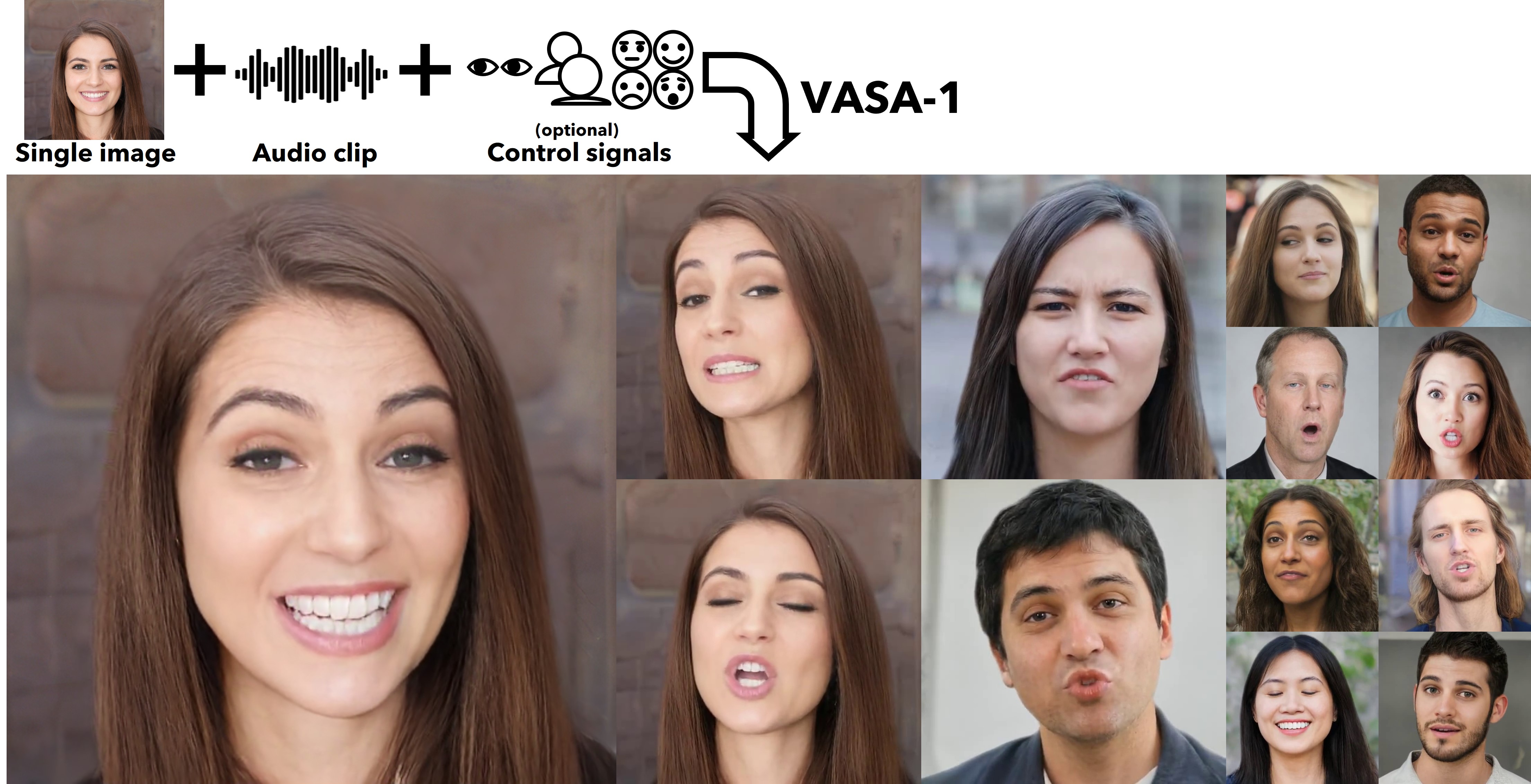Unveiling the Power of Microsoft’s VASA-1: Deepfaking with Just One Photo and Audio Track

In a world where technological advancements seem to defy the limits of imagination, Microsoft has once again pushed the boundaries with its groundbreaking innovation, VASA-1. Imagine being able to create a realistic video of someone speaking, just by using a single photo and an audio track. It sounds like something straight out of a science fiction movie, doesn't it? Well, with Microsoft's VASA-1, it's now a reality.
Table of Contents
| Sr# | Headings |
|---|---|
| 1. | Understanding VASA-1 |
| 2. | How Does VASA-1 Work? |
| 3. | The Ethics of Deepfake Technology |
| 4. | Potential Applications of VASA-1 |
| 5. | Addressing Concerns and Misuse |
| 6. | The Future of Deepfake Technology |
| 7. | Protecting Against Deepfake Manipulation |
| 8. | Impact on Society and Media |
| 9. | Conclusion: Embracing Innovation |
| 10. | Frequently Asked Questions (FAQs) About VASA-1 |
Understanding VASA-1
VASA-1, short for Visual-Audio Speech Alignment, is a cutting-edge technology developed by Microsoft that leverages artificial intelligence and machine learning algorithms to create highly realistic deepfake videos. Deepfakes are manipulated videos or images that appear real but are synthesized using AI. What sets VASA-1 apart is its ability to generate these deepfakes with startling accuracy using just a single photo and an audio track.
How Does VASA-1 Work?
Imagine you have a photo of someone and an audio recording of their voice. VASA-1 takes this input and analyzes the facial features, expressions, and voice characteristics to create a digital model of the person. Using sophisticated algorithms, it then synthesizes a video of the person speaking, seamlessly aligning the lip movements with the audio track. The result is a convincing video that can be indistinguishable from genuine footage.
The Ethics of Deepfake Technology
While the capabilities of VASA-1 are undeniably impressive, they also raise ethical concerns. Deepfake technology has the potential to be used for malicious purposes, such as spreading misinformation, manipulating public opinion, or even defaming individuals. As such, it's crucial to consider the ethical implications and implement safeguards to prevent misuse.
Potential Applications of VASA-1
Despite the ethical concerns, VASA-1 also holds promise for various legitimate applications. For example, it could revolutionize the film and entertainment industry by enabling filmmakers to bring deceased actors back to life or create lifelike CGI characters with minimal effort. Additionally, it could be used for educational purposes, allowing historical figures to "speak" to students or language learners.
Addressing Concerns and Misuse
To mitigate the risks associated with deepfake technology, Microsoft has implemented stringent security measures and safeguards within VASA-1. These include authentication protocols, watermarking features, and transparency tools to help users verify the authenticity of content. Furthermore, ongoing research is being conducted to develop advanced detection algorithms capable of identifying deepfakes.
The Future of Deepfake Technology
As technology continues to evolve, so too will the capabilities of deepfake technology. While VASA-1 represents a significant leap forward, researchers are already exploring ways to enhance its accuracy and realism further. This includes advancements in facial recognition, voice synthesis, and behavioural analysis, which could pave the way for even more sophisticated deepfake applications.
Protecting Against Deepfake Manipulation
In addition to technological solutions, combating deepfake manipulation requires a multi-faceted approach involving education, regulation, and collaboration between industry stakeholders. By raising awareness about the existence of deepfakes and promoting media literacy, individuals can become more discerning consumers of online content. Meanwhile, policymakers must enact legislation to address the legal and ethical implications of deepfake technology.
Impact on Society and Media
The proliferation of deepfake technology has significant implications for society and the media landscape. On one hand, it offers new creative possibilities and storytelling opportunities. On the other hand, it challenges the notion of trust and authenticity in an increasingly digitized world. As deepfake technology becomes more prevalent, society needs to adapt and develop strategies to navigate this new media landscape responsibly.
Conclusion: Embracing Innovation
In conclusion, Microsoft's VASA-1 represents a remarkable achievement in the field of artificial intelligence and deepfake technology. While it raises legitimate concerns about ethics and misuse, its potential for positive impact cannot be overlooked. By embracing innovation while remaining vigilant against potential risks, we can harness the power of technology to create a better future for all.
Frequently Asked Questions (FAQs) About VASA-1
1. How accurate is VASA-1 in creating deepfake videos?
VASA-1 achieves an impressive level of accuracy in generating deepfake videos, with facial expressions and lip movements closely synchronized with the audio track.
2. Can VASA-1 be used to impersonate someone?
While VASA-1 can technically be used to impersonate individuals, Microsoft has implemented safeguards to prevent misuse and promote responsible use of the technology.
3. Are there any legal implications associated with using VASA-1?
The use of deepfake technology, including VASA-1, raises complex legal issues surrounding privacy, defamation, and intellectual property rights. Users should exercise caution and adhere to relevant laws and regulations.
4. How can I protect myself against deepfake manipulation?
To protect yourself against deepfake manipulation, it's essential to verify the authenticity of online content, use reputable sources, and stay informed about the existence of deepfake technology.
5. What measures is Microsoft taking to prevent the misuse of VASA-1?
Microsoft is committed to preventing the misuse of VASA-1 through the implementation of security measures, transparency tools, and ongoing research into detection algorithms.

You must be logged in to post a comment.